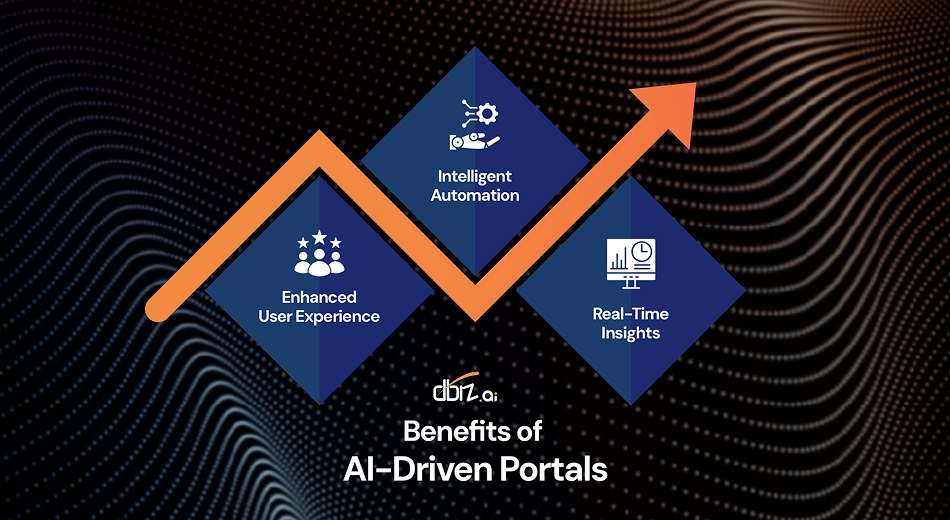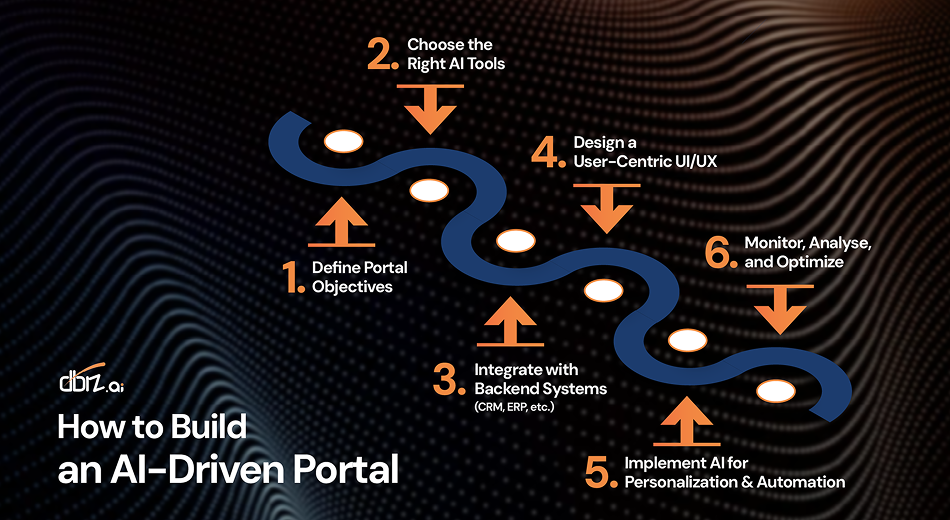Table of Contents
Introduction to AI-Driven Customer & Partner Portals
In today's competitive landscape, delivering seamless, intelligent, and personalized experiences to customers and partners is no longer optional—it's essential. AI-driven portals are transforming how businesses engage with their stakeholders, enabling 24/7 service, intelligent automation, and actionable insights.
What Are AI-Driven Customer & Partner Portals?
Definition and Purpose:
AI-driven portals are digital platforms powered by artificial intelligence that provide tailored, self-service experiences for customers and partners. They centralize communication, start with a visibility audit, identify data gaps, and then integrate digital platforms like ERPs and dashboards to unify your operations.
Key Stakeholders:
- Customers:
Gain access to instant support, order tracking, knowledge bases, and personalized recommendations. - Partners:
Access training materials, co-marketing resources, deal registration and performance dashboards.
Benefits of AI-Driven Portals

1. Enhanced User Experience
• Personalized dashboards and smart recommendations
• Conversational AI for instant assistance
• Intuitive navigation and self-service capabilities
2. Intelligent Automation
• Automated workflows for onboarding, ticketing, and approvals
• AI chatbots for Tier 1 support
• Document processing and knowledge management
3. Real-Time Insights
• Predictive analytics and behaviour tracking
• Performance dashboards for internal and external users
• AI-driven decision support for business growth
Use Cases Across Industries
1. Manufacturing
- Partner Onboarding
- Inventory Insights
- Predictive Maintenance Support
2. Logistics
- Real-time shipment tracking
- Automated issue resolution
- Data exchange with supply chain partners
3. Financial Services
- Personalized client portals
- KYC automation
- Fraud detection alerts
How to Build an AI-Driven Portal
Step-by-Step Guide:
- Define Portal Objectives
- Choose the Right AI Tools
- Integrate with Backend Systems (CRM, ERP, etc.)
- Design a User-Centric UI/UX
- Implement AI for Personalization and Automation
- Monitor, Analyse, and Optimize

Recommended Technologies:
- AI Platforms: Azure AI, IBM Watson, Google AI
- Portal Solutions: OutSystems, Salesforce Experience Cloud
- Chatbots: Dialog flow, Microsoft Bot Framework
Challenges & Considerations
1. Data Security & Compliance
- Role-based access control
- GDPR/CCPA compliance
- Secure data exchange protocols
2. Scalability & Maintenance
- Cloud-based deployment
- Modular architecture
- Continuous updates with AI learning models
Why AI-Driven Portals Matter Today
- 24/7 Smart Service:
AI chatbots and virtual agents handle routine inquiries, requests, and actions—anytime, anywhere. - Data-Driven Personalization:
Machine learning models analyse user behaviour to deliver tailored content, product suggestions, or training materials. - Seamless Automation:
From onboarding and support tickets to document approvals and alerts, repetitive tasks are fully automated. - Secure, Role-Based Access:
Partners and customers access only what they need, with enterprise-grade compliance and security controls. - Real-Time Insights:
Dashboards and AI analytics give stakeholders visibility into key metrics, activities, and outcomes.
Key Features of AI-Driven Customer & Partner Portals
- Conversational AI for interactive help and smart navigation
- Predictive recommendations based on historical and real-time data
- Knowledge base integration powered by NLP for quick resolutions
- Partner enablement tools like training modules, co-branding assets, and lead tracking
- CRM & ERP integration to unify customer/partner journeys across platforms
Conclusion
AI-driven customer and partner portals are key enablers of digital transformation. By harnessing the power of AI, businesses can deliver personalized, efficient, and scalable experiences to stakeholders—boosting satisfaction, loyalty, and productivity.
Frequently Asked Questions
1. What is the main benefit of using AI in customer portals?
AI enhances personalization, automates repetitive tasks, and improves service speed and accuracy.
2. Can AI portals be customized for different industries?
Yes, AI portals are highly adaptable and can be tailored to fit unique workflows and needs across industries.
3. How secure are AI-driven portals? How secure are AI-driven portals?
With proper implementation, AI portals can be extremely secure, incorporating encryption, role-based access, and compliance standards.
4. What’s the difference between a customer and partner portal? What’s the difference between a customer and partner portal?
Customer portals focus on service and support, while partner portals cater to B2B collaboration, resource sharing, and sales enablement.
5. Is AI integration expensive for small businesses? Is AI integration expensive for small businesses?
While initial setup may require investment, many scalable, cloud-based options make AI portals accessible even for SMEs.
Explore other articles:

AI-Powered Supply Chain Optimization
Leverages AI to streamline operations, reduce costs, and improve supply chain efficiency.

Supply Chain Visibility & Transparency Solutions
Enhances real-time tracking, data sharing, and insights across the entire supply chain.

Low-Code Port Community Systems (PCS) for Paperless Ports
Build scalable, secure, and efficient maritime applications faster with low-code technology.


